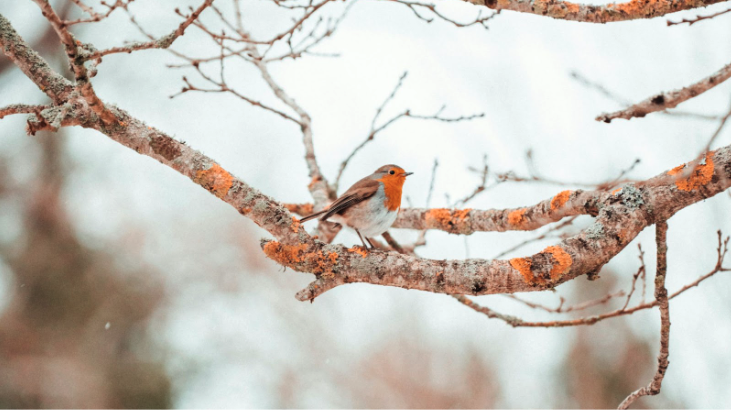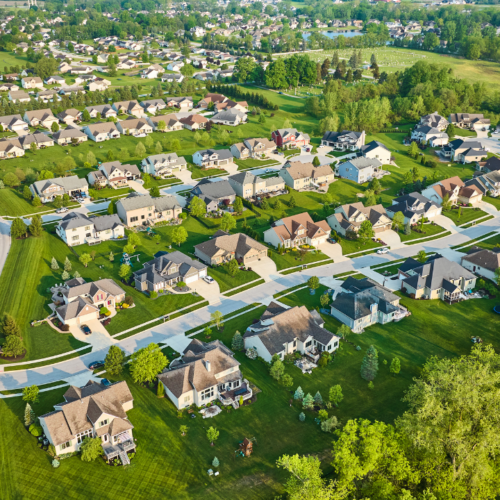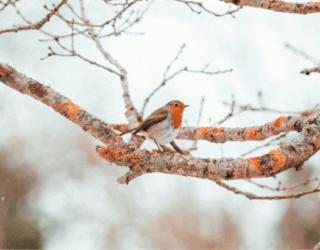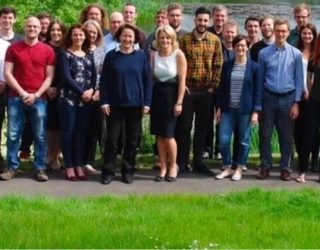We often hear about the state of nature across the globe, with animals we know and love threatened with extinction in the Amazon or Great Barrier Reef. But did you know that this is happening on our doorstep, too?
Data shows that since 1970, UK species have declined by an average of 19%, with nearly 1 in 6 species now threatened with extinction. Much of this wildlife can be found in our gardens at home.
With this in mind, we surveyed the nation to understand which wildlife and species are being spotted less frequently in gardens and to explore the reasons behind this decline. Our goal is to provide solutions for homeowners and businesses on how they can encourage wildlife back into their gardens or green spaces, creating safe and secure habitats for them to thrive.
Contents
- Frequency of wildlife sightings
- Wildlife sightings across cities
- Where is wildlife decreasing the most?
- Why is garden wildlife declining?
- Wildlife management
- Solutions for increasing garden wildlife, including free downloadable guides
Frequency of wildlife sightings
Firstly, we asked people across the UK how often they have observed certain types of wildlife in their gardens over the past year. The results highlight a stark reality for the state of our garden wildlife.
Overall, the majority of Brits report never seeing the following wildlife in their gardens: mice or voles (34.7%), hedgehogs (39.6%), badgers (70.6%), foxes (46.1%), deer (73.5%), bats (49.5%), reptiles (63.4%), frogs (50.7%), tadpoles (69.6%), toads (61.5%), and newts (72.8%).

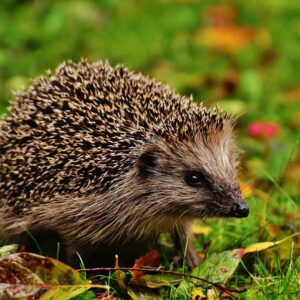

On a positive note, birds are the most commonly observed wildlife species in UK gardens, with 60.5% of respondents seeing them daily. Butterflies are also frequently spotted, with 22.6% seeing them at least weekly, while 20.4% report seeing moths at least weekly. Additionally, 30.2% of people see bees daily.
However, while it’s encouraging to know that sightings are still prevalent among the UK population, figures show that the distribution of pollinators, including bees, hoverflies and moths, has decreased by 18% on average, while species providing pest control, such as the 2-spot ladybird, have declined by 34%.
Wildlife sightings across cities
From more urbanised cities to quieter towns, the wildlife landscape across cities varies significantly. Our findings uncover intriguing patterns in wildlife sightings, highlighting areas where certain species thrive and where efforts are needed to enhance garden habitats and attract new wildlife species.
Some of our findings are discouraging, as a higher percentage of residents in each city report never spotting wildlife in their garden or seeing them only infrequently, except for birds, moths, butterflies, and bees.
Here are the most notable insights we discovered for each species:
Garden Birds
- Sheffield (81.3%) vs. Cardiff (4%): Sheffield’s higher daily sightings may be attributed to its green spaces and parks, which provide ample bird habitats and food sources. In contrast, Cardiff’s lower sightings could be due to urbanisation and fewer green areas in densely populatedparts of the city.
Mice/Voles
- Birmingham (46.4% never see them): Birmingham’s urban environments may not provide suitable habitats for mice and voles, which prefer more rural or less developed areas with vegetation and hiding spots.
Hedgehogs
- Nottingham (6.8% daily sightings): Nottingham’s efforts in promoting hedgehog-friendly gardens and urban wildlife initiatives likely contribute to more frequent daily sightings (although this is still considerably low). However, in cities like Belfast and Edinburgh, none of the respondents reported seeing them daily (0% of respondents). As such, these locations may lack suitable habitats or face barriers like busy roads that hedgehogs struggle to cross.
Badgers
- Liverpool (89.7%), Sheffield (87.5%), Cardiff (84.7% never see them): These cities may have limited green spaces or natural corridors where badgers thrive. Urbanisation and human development can fragment their habitats, making sightings less common.
Deer
- Liverpool (93.1%), Sheffield (92.2% never see them): Deer prefer large woodland areas and open spaces, which are scarce in urban environments like Liverpool and Sheffield. High levels of human activity and infrastructure development further limit their presence.
Bats
- Bristol (10.2%), Manchester (11.2% monthly sightings): Cities with more parks, rivers, and green corridors tend to support bat populations. Urban areas with old buildings and mature trees provide roosting sites and insect-rich environments that attract bats.
Reptiles
- Sheffield (85.9%), Belfast (81.5%), Edinburgh (81.3% never see them): Reptiles require specific habitats such as grasslands, heathlands, or wetlands, which are less prevalent in urbanised settings. Cities with fewer natural reserves or protected areas see fewer reptile sightings.
Tadpoles
- Belfast (92.6% never see them): Urban areas often lack suitable breeding ponds or marshy areas essential for tadpole development. Pollution and habitat loss further reduce their presence in cities.
Frogs
- London and Southampton (10.5% monthly sightings): Cities with accessible green spaces like parks and gardens offer habitats for frogs. However, cities like Edinburgh, Belfast, and Newcastle may lack such environments or have high levels of urbanisation, limiting frog populations.
Toads
- Belfast (88.9% never see them): Similar to frogs, toads require water bodies for breeding and natural habitats for shelter. Urban development and loss of ponds or wetlands decrease their presence in cities.
Newts
- Liverpool (85.3%), Belfast (85.2%), Edinburgh (84.4% never see them): Newts are highly sensitive to habitat destruction and pollution. Cities with fewer natural water bodies or wetland areas are less likely to support newt populations.
Butterflies and Moths
- Bristol (23.7%), Nottingham (23% daily sightings): These cities likely have diverse flora and butterfly-friendly habitats such as wildflower meadows and parks. Urban gardening practices that promote native plants also attract butterflies and moths.
Bees
- Cardiff (41.9%), Southampton (41.2% daily sightings): Urban gardens with various flowering plants and fewer pesticide applications provide ideal foraging and nesting sites for bees. Cities with less green space or limited floral resources see fewer bee sightings.
Analysing this data reveals several factors contributing to the infrequency of wildlife sightings, such as urbanisation, increased infrastructure development, and the lack of wetlands and diverse green spaces. Whilst Local Authorities have oversight of infrastructure, commercial and residential development, and associated protected spaces for wildlife, homeowners with access to gardens also have an opportunity to create safe habitats that support local wildlife populations.
Visit our habitat management page to find out how our services can help.
Where is wildlife decreasing the most?
We asked participants to reflect on the state of wildlife in their gardens five years ago, aiming to compare its current presence. According to our findings, the cities that have experienced the most significant decrease in wildlife over the past five years include the following:
- Bristol – 11.90%
- Newcastle – 11.80%
- London – 9.80%
- Southampton – 9.60%
- Cardiff – 8.10%
- Sheffield – 7.80%
- Nottingham – 7.50%
- Birmingham – 7.20%
- Glasgow – 6.80%
- Liverpool – 6.00%
- Norwich – 5.70%
- Leeds – 4.20%
- Edinburgh – 3.10%
- Manchester – 2.90%
- Belfast – 0.00%
Note: The data presented reflects the percentage of survey participants across various cities who believe that wildlife in their gardens has significantly decreased over the past five years. It’s important to note that these percentages represent perceptions rather than absolute measurements of wildlife decline. Participants were asked to select from options ranging from “significantly decreased” to other categories, and we focused on those who chose “significantly decreased” to highlight perceived changes.
The cities with a higher proportion of people that are very concerned about wildlife in their gardens declining include:
- Bristol – 28.80%
- Sheffield – 25.00%
- Nottingham – 23.60%
- Cardiff – 23.40%
- Liverpool – 21.60%
- London – 21.60%
- Edinburgh – 20.30%
- Glasgow – 20.30%
- Southampton – 19.30%
- Birmingham -18.80%
- Leeds – 16.70%
- Norwich – 14.80%
- Newcastle – 14.00%
- Manchester – 12.90%
- Belfast – 11.80%
Note: The data highlights the percentage of survey participants across various cities who express significant concern about the decline of wildlife in their gardens. These percentages reflect public perceptions and attitudes toward local wildlife populations rather than definitive measurements of actual declines. Participants were asked to indicate their level of concern, and we focused on those who reported being “very concerned” to illustrate heightened awareness and sentiments regarding wildlife decline.
While many residents express varying levels of concern, unfortunately, many people in each of these cities state that they are ‘not concerned at all’ about the decline of wildlife in their gardens. The cities with the highest percentage of people who express no concern include:
- Glasgow – 18.6%
- Belfast – 11.1%
- Southampton – 9.6%
- Edinburgh – 9.4%
- Birmingham – 8.7%
- Leeds – 8.3%
- Cardiff – 8.1%
- Liverpool – 7.8%
- Manchester – 7.6%
- London – 7.6%
- Nottingham – 6.8%
- Bristol – 6.8%
- Sheffield – 6.3%
- Norwich – 4.5%
- Newcastle – 3.2%
Note: The data illustrates the percentage of survey participants across various cities who indicate they are “not concerned at all” about the decline of wildlife in their gardens. While this data suggests a need for greater concern, it’s possible that people who are ‘not concerned at all’ may be those who haven’t observed any decline in their area. As a result, they might not feel the need to be concerned.”
Positively, these city rankings reveal that there are people out there who recognise the decline in wildlife and are willing to acknowledge their concerns.
Why is garden wildlife declining?
We asked participants why they believe wildlife is declining in gardens, and here’s what we found:
- Habitat loss – 50.2%
- Climate change – 44.6%
- Pesticide use – 35%
- Lack of food sources – 34%
- Pollution – 26.7%
- Predation/disturbance by pets – 22%
- Invasive species – 22%
As environmental experts, we can confirm that these factors contribute to the decline in wildlife populations and highlight the impact of human-related activities on biodiversity.
Wider research supports this, highlighting that out of the habitats that are important for wildlife, only 14% were found to be in a good ecological state, including just 7% of woodlands and 25% of peatlands.
Wildlife management
While our data and existing reports clearly show a decline in wildlife sightings and absolute population declines, there is hope in reversing biodiversity losses through wildlife and habitat management, mitigating climate change, and adopting sustainable agricultural practices. While local authorities and large corporations have a significant role to play in implementing these changes, individuals can also make a positive impact by transforming their gardens into wildlife havens. By taking simple steps at home, such as planting native species and providing water and shelter, collectively, we can substantially help to restore wildlife and habitats across the UK.
Solutions for increasing garden wildlife
Although our findings highlight that 7.8% of Brits aren’t willing to take any action to support wildlife and habitats in their gardens, many in the UK would be willing to take action in the following areas:
- Installing bird feeders/ nest boxes – 47.6%
- Planting native plants – 39.5%
- Leaving an area of the garden wild/overgrown – 36.2%
- Reducing pesticide use – 32%
- Installing other wildlife ‘homes’ – 27.3%
- Creating a compost area – 23.1%
- Creating a pond – 20.4%
Encouragingly, respondents would be interested in installing bird feeders/nest boxers and creating other wildlife ‘homes’ to support wildlife conservation. With this in mind, we’ve created three guides to support specific wildlife, including hedgehogs, reptiles and amphibians, and bats.
Download the guides below for step-by-step instructions on building wildlife habitats.
- Here’s how to build a hedgehog home for your garden
- Here’s how to build a reptile and amphibian habitat for your garden
- Here’s how to build a bat home for your garden
Habitat management
We provide practical habitat creation and management solutions to generate positive environmental gains and compensate for losses from developments. Learn more about our habitat management services here.


